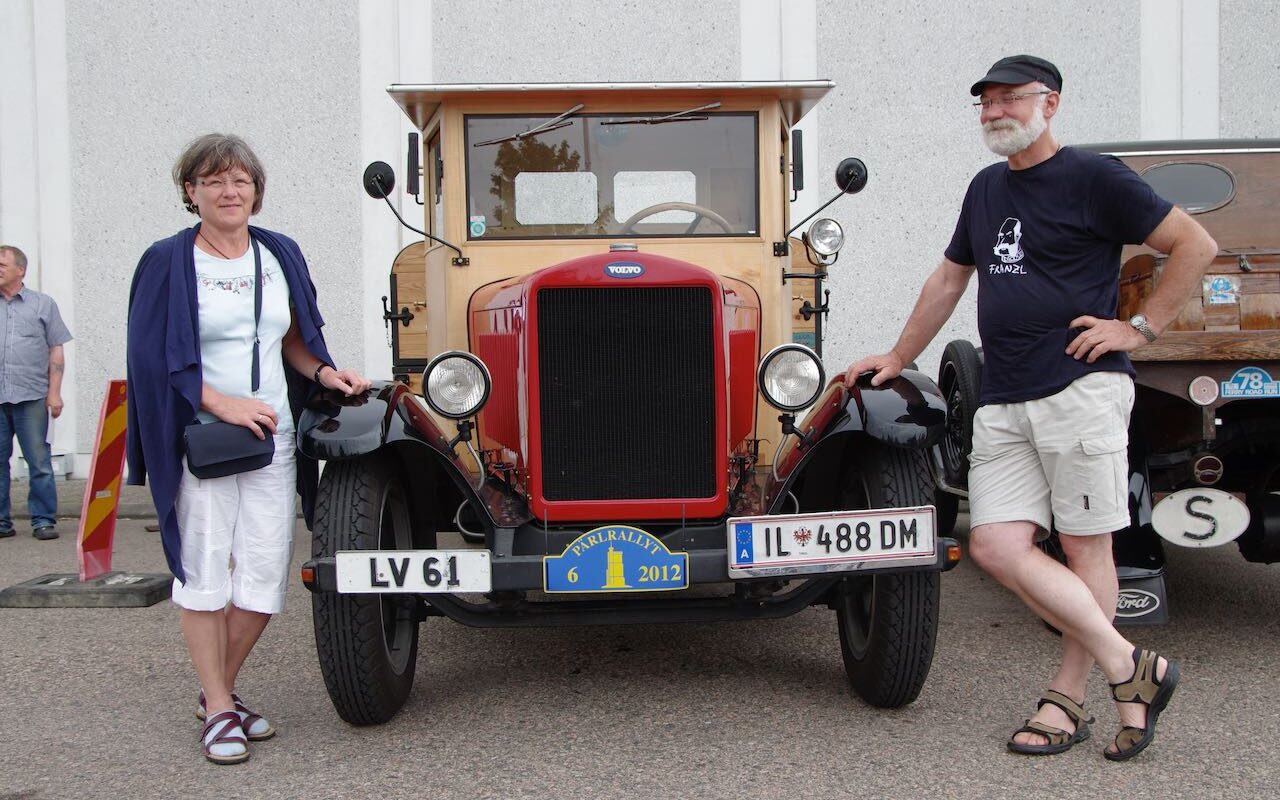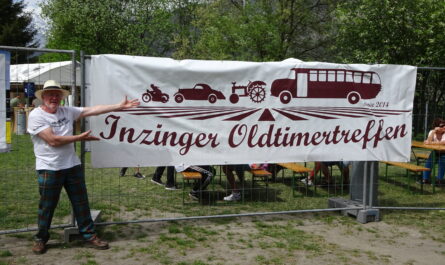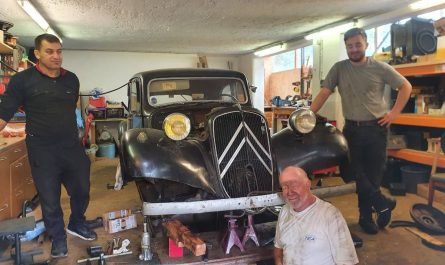Diethard Gstir (DG) and Lambert Rammer (LR) are interviewed by Andrew (A)
A: Diethard Gstir is known as a keen Sweden and Volvo fan. You’ve always had a preference for Sweden, yes? Even as a student?
DG: Indeed. In 1976, as a student in my holidays, I spent six weeks working in a paper factory in Sweden. I actually hitch-hiked all the way there, not with a rucksack….but with a suitcase!
A: Wow, that was adventurous! Tell us about your lorry, which we know is your pride and joy.
DG: A LV61 from 1929. LV stands for the Swedish word ‘Lastvagn’, the ‘6’ refers to the number of cylinders, and the ‘1’ tells us that it is from the very first series of lorries.
A: More data, if you can!
DG: The 6-cylinder engine has a 3-litre capacity, producing 55 brake horsepower….enough to move the 2.2 tons that it weighs.
A: I read from the article in ‘Motor Klassik‘ from May 2018, about you and your truck, that it has no front brakes? Really….?
DG: That’s right. It has only rear rod-brakes, with drums, non-hydraulic, then, so I have to drive ‘on sight’, planning any next manoeuvre ahead….
A: So, by fore-sight, literally…. Moving on, how did you acquire the lorry?
DG: I was in Sweden in 2002 for the 75-year Volvo celebration. I saw this wreck of a truck….and collected it later, in deepest mid-winter! It consisted of a bare chassis, axles, 4 wheels, a seized engine, two front wings, and a bonnet. Nothing else….
A: And the restoration?
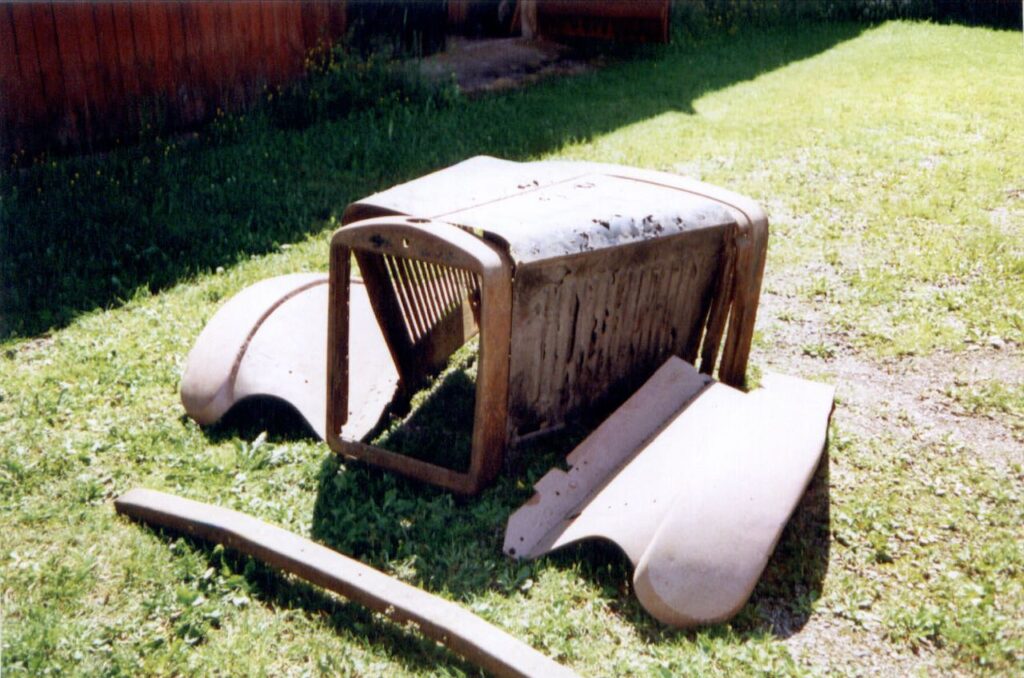
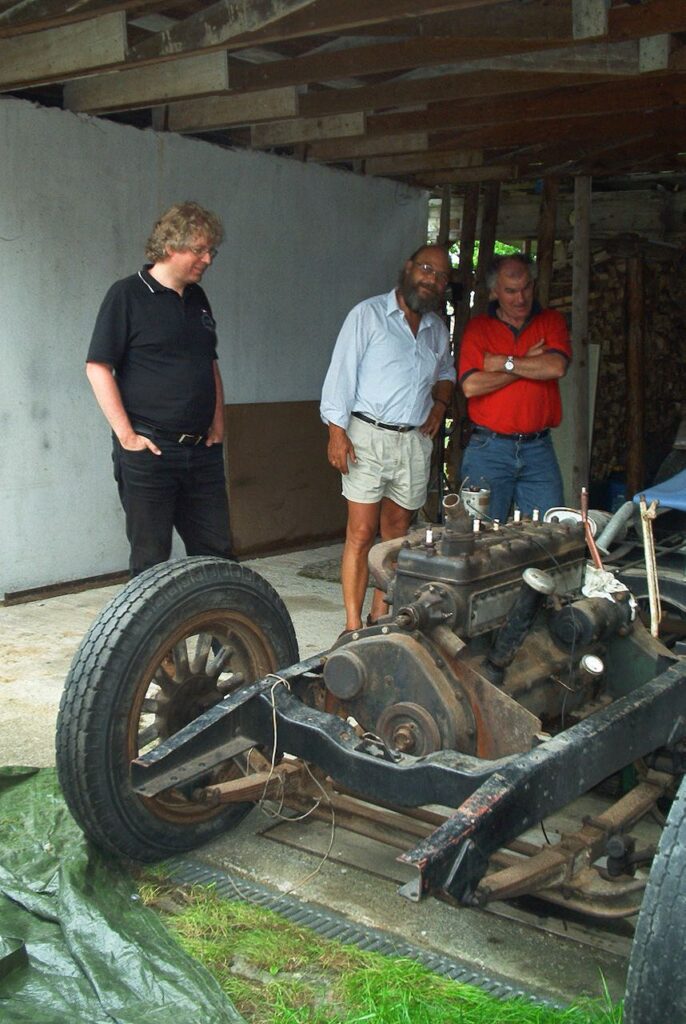
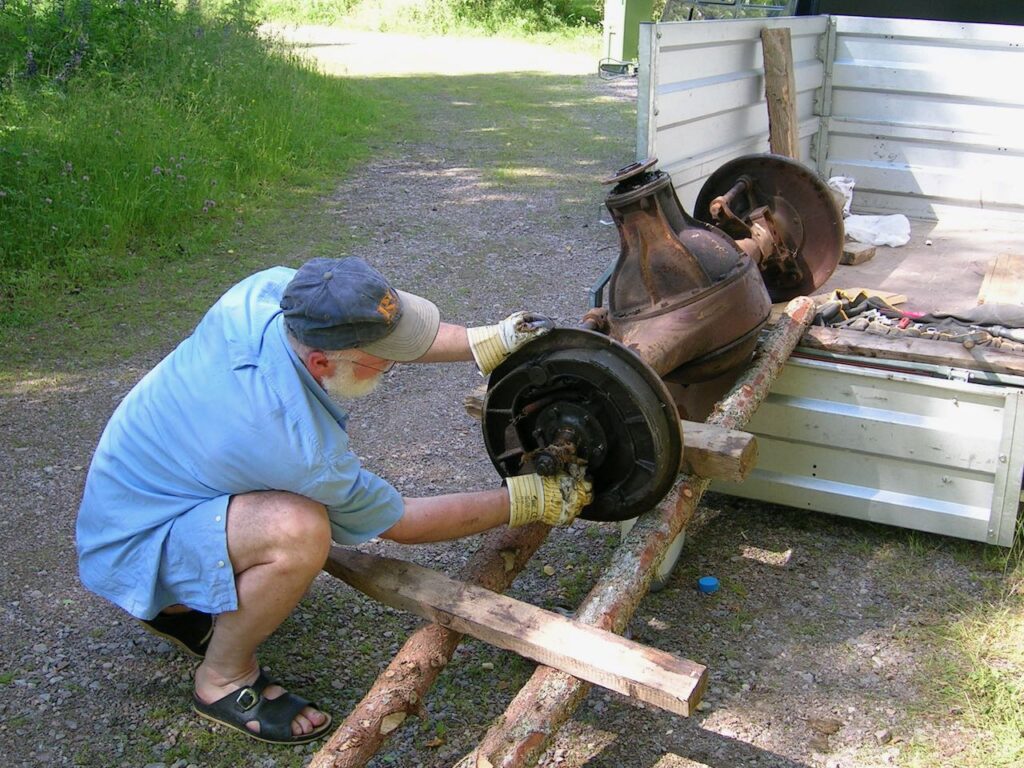
DG: That took 10 full years. The metal was sand-blasted and zinc-coated. All the later work was only possible through technical advisors and friends….like Lambert Rammer here! We are both engineers. I studied first at an HTL…
LR: ….. as a boy I started by repairing agricultural machinery, together with my father, on our small farm, then studied at a Realgymnasium, afterwards civil engineering at the University of Innsbruck.
DG: Without Lambert here, this vast project could never have been completed. We were both fully employed, so the project took up most of the little free time we had. It needed an almost fanatical commitment on our parts…The vehicle is owned jointly between us.
LR: Working on the wood was very time-consuming….more than two years of careful planning and carrying out the work. The driver’s cab alone consisted of a hundred separate pieces of wood, which all had to fit and dove-tail exactly. A 70-year-old Swedish wheelwright, who built professionally the Volvo’s wooden driver’s cab, donated us his then hand-drawn plans as a basis for our work. When he saw the results of our work on the cab some ten years later, he was particularly impressed!
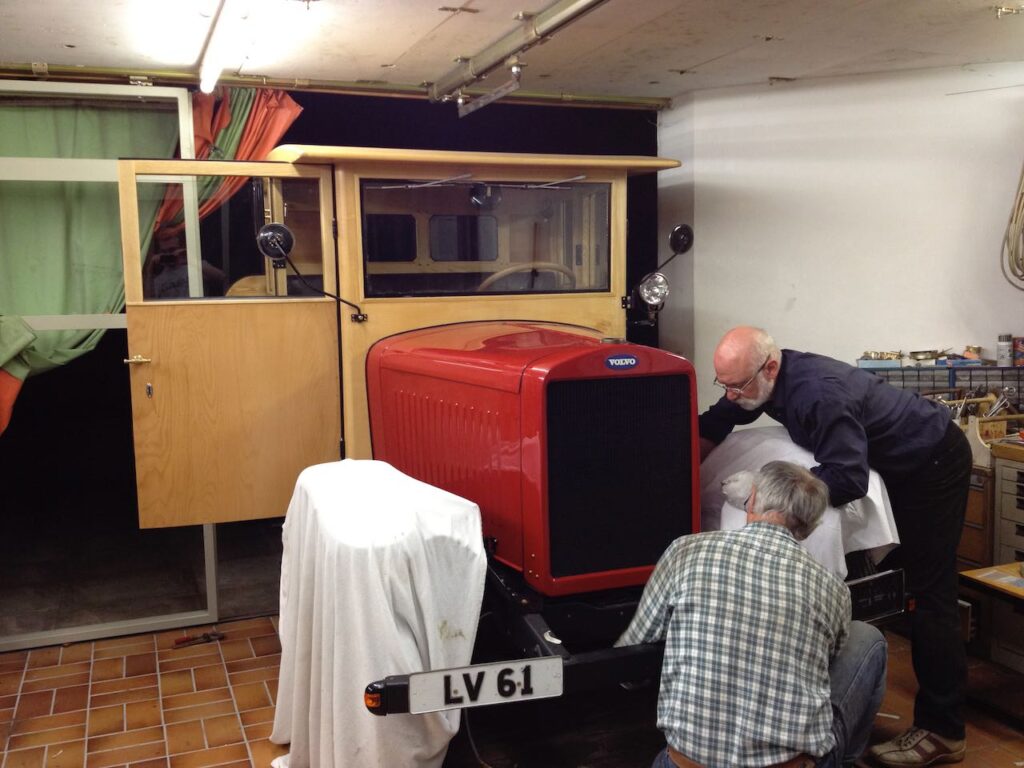
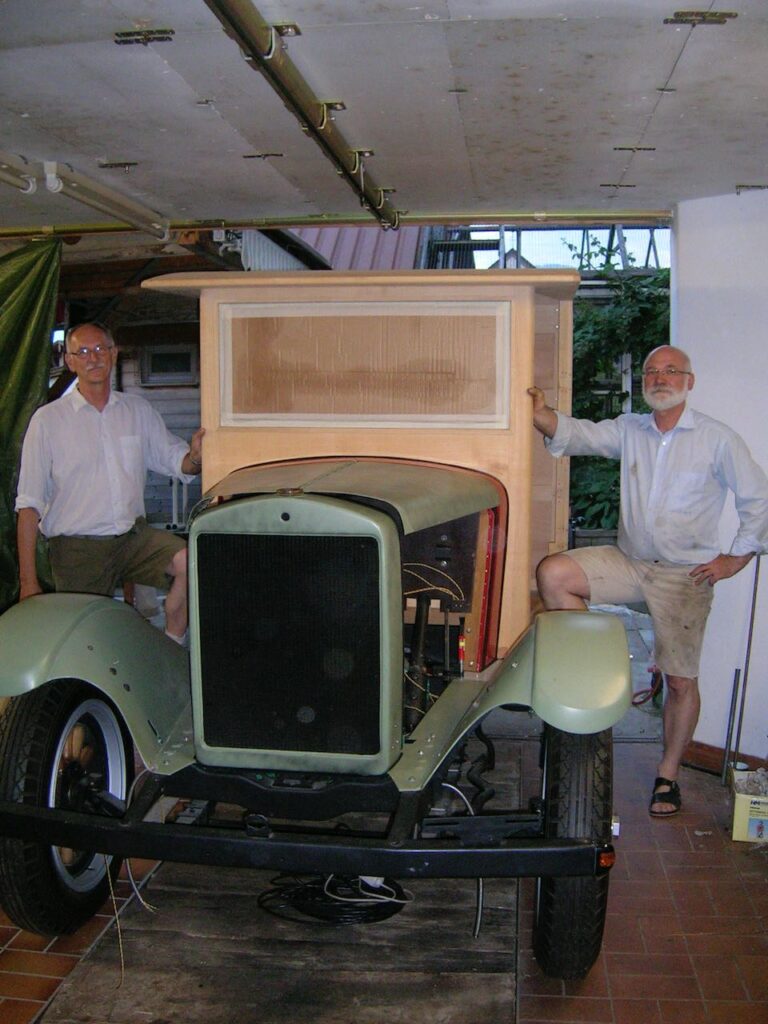
A: Did you make any mistakes during the restoration work….?
DG: We wish we had consulted specialists earlier….to avoid discovering everything by ourselves!
LR: But the work was always fascinating, a creative challenge for us both. We always worked in tandem, in harmony, by discussing each stage step by step. In places we even had to improvise…
DG: The high-points of the project? First, hand-cranking the engine to start it, mounting the wooden cab to the frame, then handling the newly spray-painted parts with white gloves! There’s a picture here of us with our ‘surgical’ white gloves….
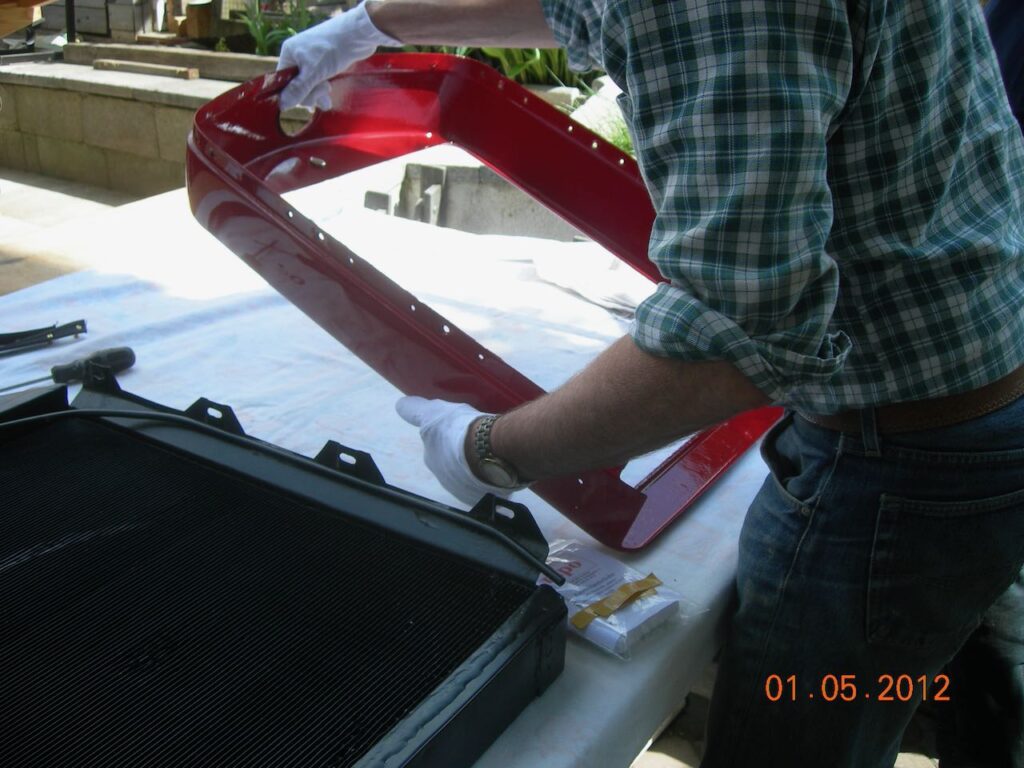
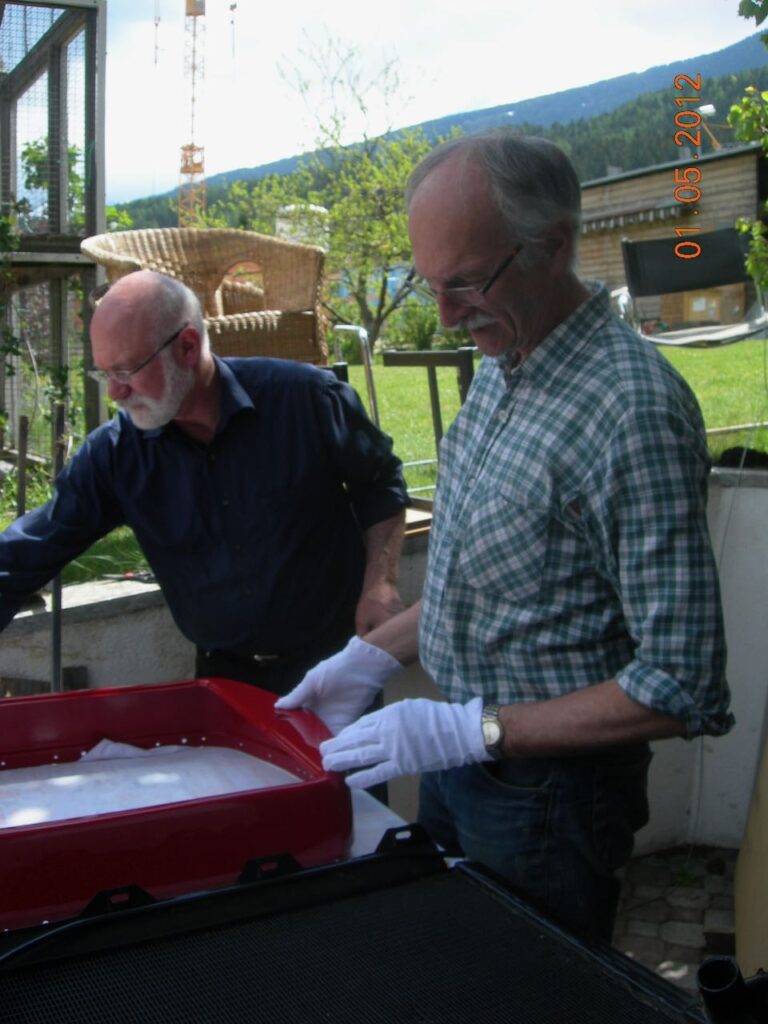
LR: The grand finale was driving the LV61 down to TUEF Innsbruck to have it registered. Since then, we’ve exhibited Volvo LV61 in Sweden, at the Concours d’Elégance at Schloss Schwetzingen near Heidelberg, and ….of course….here at the Oldtimer Club spring meetings here in Inzing.

A: Congratulations, truly. Thank you so much for your time on this summer evening.
PS. The next Concours d’Elégance for Classic vehicles at Schwetzingen, near Heidelberg, is from September Friday 2nd to Sunday 4th , 2022. It’s well worth making the weekend trip there! Andrew

 von
von 